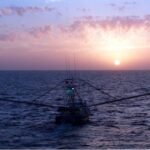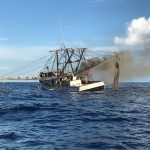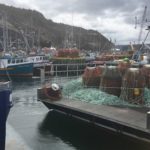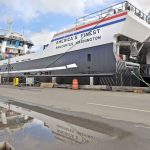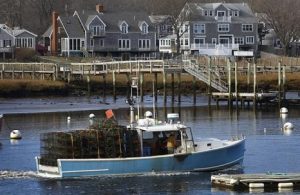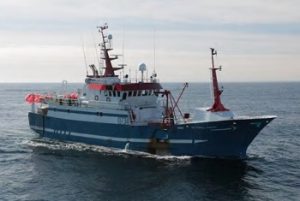Tag Archives: National Transportation Safety Board
NTSB Report: Fire Alarm Aboard Kodiak Enterprise Never Sent an Alert
 In the early hours of April 8, 2023, a fire broke out in the dry stores compartment of the fishing vessel F/V Kodiak Enterprise. The vessel was in port for a regular yard period, including cutting and welding of wasted hull and bulkhead sections. Four crewmembers from the engineering department were staying on board. On April 7, repair contractors were aboard to carry out hot work on the pilot house, hold deck, 03 deck and on a variety of vent pipe valves. The dry stores cargo hatch on the 03 level was propped open so that the workers could run a forced air ventilation hose into the interior. They finished and disembarked at about 1530 hours. The assistant chief engineer inspected the work areas after they left, and all looked to be in order. more, >>CLICK TO READ<< 18:14
In the early hours of April 8, 2023, a fire broke out in the dry stores compartment of the fishing vessel F/V Kodiak Enterprise. The vessel was in port for a regular yard period, including cutting and welding of wasted hull and bulkhead sections. Four crewmembers from the engineering department were staying on board. On April 7, repair contractors were aboard to carry out hot work on the pilot house, hold deck, 03 deck and on a variety of vent pipe valves. The dry stores cargo hatch on the 03 level was propped open so that the workers could run a forced air ventilation hose into the interior. They finished and disembarked at about 1530 hours. The assistant chief engineer inspected the work areas after they left, and all looked to be in order. more, >>CLICK TO READ<< 18:14
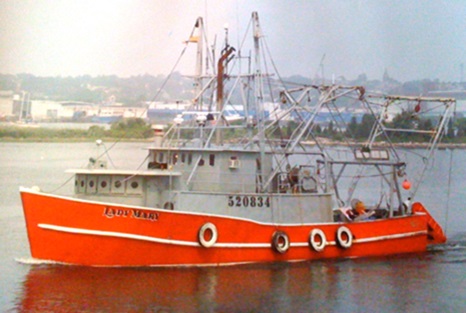
Fishing Vessel Lady Mary Remembered 15 Years After Sinking
On March 18, 2009, the F/V Lady Mary, a 71-foot scallop boat, left Cape May Harbor for the scalloping grounds in an area known as the Elephant’s Trunk, roughly 60 miles from Cape May. The crew had nearly completed its catch when, between 5:19 and 5:39 a.m. on March 24, the boat sank. Six of the seven crew members were lost. Over the next four years, the Coast Guard and the National Transportation Safety Board completed investigations into the sinking, concluding there were multiple factors responsible. The Coast Guard filed its report on Aug. 23, 2013, saying the Lady Mary did not capsize, nor did it sink due to a fire or explosion. Despite the reported nearby presence of a container vessel named the Cap Beatrice, the Coast Guard concluded there was no evidence that any other vessel was at fault for the chain of events that eventually led to the sinking. Photos, more, >>CLICK TO READ<< 07:35
NTSB Report: Flooding and Non-Operational Alarms Led to Fishing Vessel Loss
 The National Transportation Safety Board (NTSB) has concluded that the likely cause of the capsizing and sinking of the fishing vessel Hotspur near Nunez Rocks, Alaska, was flooding into below-deck compartments. On August 2, 2022, while transiting through the Dixon Entrance, the Hotspur began to list to port. Realizing the severity of the situation, the captain and four crewmembers quickly abandoned ship, escaping to a life raft. They were subsequently rescued by nearby vessels. Within 20 minutes of the crew first noticing the list, the Hotspur had capsized and sunk. more, >>click to read<< 06:32
The National Transportation Safety Board (NTSB) has concluded that the likely cause of the capsizing and sinking of the fishing vessel Hotspur near Nunez Rocks, Alaska, was flooding into below-deck compartments. On August 2, 2022, while transiting through the Dixon Entrance, the Hotspur began to list to port. Realizing the severity of the situation, the captain and four crewmembers quickly abandoned ship, escaping to a life raft. They were subsequently rescued by nearby vessels. Within 20 minutes of the crew first noticing the list, the Hotspur had capsized and sunk. more, >>click to read<< 06:32
NTSB Issues Safety Alert on Personal Locator Devices for Mariners
 A new safety alert issued by the National Transportation Safety Board (NTSB) to provide each crewmember with a personal locator device. These devices improve a mariner’s chance of rescue during an emergency. During an emergency at sea, a mariner’s chance of survival decreases if search and rescue cannot quickly and accurately identify their location. Personal locator devices, such as personal locator beacons (PLB) or satellite emergency notification devices (SEND), can accurately pinpoint a person’s location. NTSB investigations found that currently available personal locator beacons provide a location accuracy of about 300 feet and a nearly instant search and rescue notification when activated. more, <<click to read<<17:24
A new safety alert issued by the National Transportation Safety Board (NTSB) to provide each crewmember with a personal locator device. These devices improve a mariner’s chance of rescue during an emergency. During an emergency at sea, a mariner’s chance of survival decreases if search and rescue cannot quickly and accurately identify their location. Personal locator devices, such as personal locator beacons (PLB) or satellite emergency notification devices (SEND), can accurately pinpoint a person’s location. NTSB investigations found that currently available personal locator beacons provide a location accuracy of about 300 feet and a nearly instant search and rescue notification when activated. more, <<click to read<<17:24
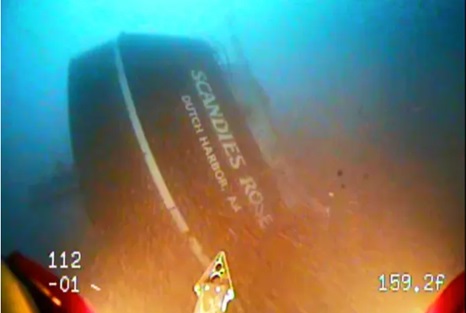
Read the final Coast Guard report on the 2019 sinking of F/V Scandies Rose in Gulf of Alaska
The U.S. Coast Guard Marine Board of Investigation has issued its final report on the sinking of the 130-foot crab vessel Scandies Rose on New Year’s Eve, 2019, a tragedy that took the lives of five men on board, including the captain. Two crew members, Dean Gribble Jr., of Edmonds, Wash., and Jon Lawler, of Anchorage, survived by reaching a life raft in the roiling the Gulf of Alaska; they were rescued by U.S. Coast Guard near Sutwick Island off the Alaska Peninsula. Captain Gary Cobban, Jr. and his son David, Seth Rousseau-Gano, Arthur Ganacias, and Brock Rainey died. Lawler died in a motorcycle accident on Oct. 31, 2021, leaving Gribble as the sole survivor of the disaster. The Marine Board of Investigations found a major factor in the sinking was the captain’s judgment. An earlier report by the National Transportation Safety Board was more guarded in assigning blame. more, >>click to read<< 08:19
Flooded Engine Room Caused Fishing Vessel to Sink
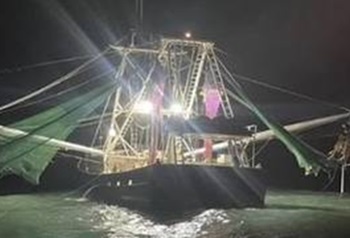 Uncontrolled flooding through a hole in the plating beneath the engine room of a fishing vessel led to its sinking in the Gulf of Mexico, the National Transportation Safety Board (NTSB) said Thursday. The commercial fishing vessel Captain Alex was fishing offshore of Galveston, Texas on Nov. 25, 2022, when the vessel began flooding. The four crewmembers on board were unable to stem the flooding and evacuated to a responding U.S. Coast Guard boat. The sinking resulted in an oil sheen and debris field; a reported 17,000 gallons of diesel fuel were on board. There were no injuries. The Captain Alex was a total loss valued at $500,000. more, >>click to read<< 14:50
Uncontrolled flooding through a hole in the plating beneath the engine room of a fishing vessel led to its sinking in the Gulf of Mexico, the National Transportation Safety Board (NTSB) said Thursday. The commercial fishing vessel Captain Alex was fishing offshore of Galveston, Texas on Nov. 25, 2022, when the vessel began flooding. The four crewmembers on board were unable to stem the flooding and evacuated to a responding U.S. Coast Guard boat. The sinking resulted in an oil sheen and debris field; a reported 17,000 gallons of diesel fuel were on board. There were no injuries. The Captain Alex was a total loss valued at $500,000. more, >>click to read<< 14:50
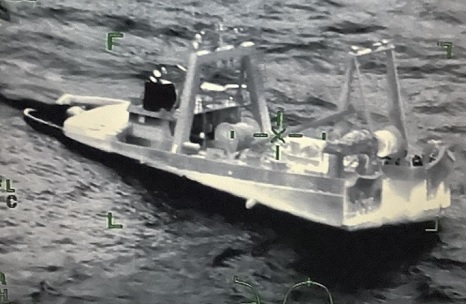
NTSB: F/V Tremont Hit MSC Boxship as it was Fixing Gyrocompass While Underway
The 115-foot trawler had a crew of 12 plus the captain and mate’s 2-year-old child aboard as a passenger when it left New Bedford, Massachusetts on October 7, 2022, for squid fishing off the U.S. East Coast. The crew told the NTSB about four or five days into the 20-day trip “the vessel’s gyrocompass became ‘kind of sporadic,’” but since the error was last than 10 degrees the captain and mate, “determined it ‘was something we could live with,’” and so they continued to operate along the East Coast. They also knew that the vessel’s AIS was not fully functioning and while it was transmitting it was not displaying on the trawler. more, >>click to read<< 07:41
NTSB Releases Report of Sinking of Commercial Fishing Vessel off Georgia Coast
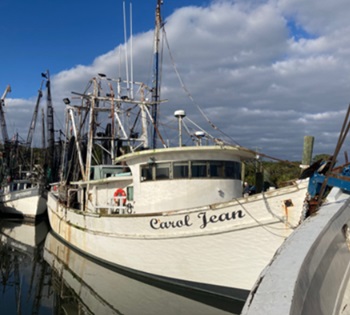 The National Transportation Safety Board issued Marine Investigation Report 23-24 Tuesday for its investigation of the sinking of the commercial fishing vessel Carol Jean off the coast of Georgia. On March 21, while anchored with no one on board, the Carol Jean flooded and sank in the Atlantic Ocean near Tybee Island, Georgia. After the vessel’s emergency position indicating radio beacon, or EPIRB, activated, the US Coast Guard responded and found a debris field where the beacon’s signal originated. There was no pollution reported. The loss of the Carol Jean was estimated at $250,000. The owner/captain of the Carol Jean purchased another commercial fishing vessel and planned to use the Carol Jean to tow the second vessel to Valona, Georgia. >>more, click to read<< 14:22
The National Transportation Safety Board issued Marine Investigation Report 23-24 Tuesday for its investigation of the sinking of the commercial fishing vessel Carol Jean off the coast of Georgia. On March 21, while anchored with no one on board, the Carol Jean flooded and sank in the Atlantic Ocean near Tybee Island, Georgia. After the vessel’s emergency position indicating radio beacon, or EPIRB, activated, the US Coast Guard responded and found a debris field where the beacon’s signal originated. There was no pollution reported. The loss of the Carol Jean was estimated at $250,000. The owner/captain of the Carol Jean purchased another commercial fishing vessel and planned to use the Carol Jean to tow the second vessel to Valona, Georgia. >>more, click to read<< 14:22
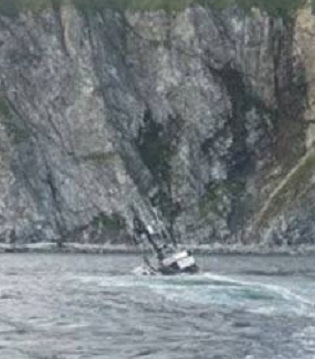
Submerged Rock Led to Fishing Vessel Grounding
A captain’s decision to navigate close to shore in an area with uncharted rocks led to the grounding and capsizing of a fishing vessel in Alaska last year, the National Transportation Safety Board (NTSB) said. The Challenger struck a submerged rock while fishing for salmon along the shore of Kodiak Island, Alaska on August 7, 2022. The vessel began taking on more water than the onboard pumps could handle. The captain and three crewmembers abandoned ship and were rescued by a nearby Good Samaritan fishing vessel, and the vessel capsized soon after. Another Good Samaritan vessel towed the fishing vessel to Larsen Bay. No injuries were reported. The Challenger was declared a total loss, with damages exceeding $600,000. >>click to read<< 10:51

F/V Kodiak Enterprise: Unified Command stands down for vessel fire in Tacoma, Washington
The Unified Command composed of Tacoma Fire Department, U.S. Coast Guard Sector Puget Sound, Washington Department of Ecology and Puyallup Tribe of Indians, with support from several other agencies, which was stood up to respond to the April 8 fire aboard the fishing vessel Kodiak Enterprise moored in the Hylebos Waterway in Tacoma, was stood down Friday. Over the last several days, responders alternated between removing fuel and pockets of water, to maintain vessel stability. All of the diesel remaining aboard the vessel was successfully removed with no fuel spilled or sheening observed during defueling operations. Now that the pollution threat has been mitigated, the Unified Command has stood down. >click to read< 08:51
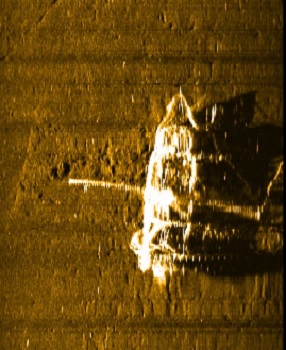
NTSB Reiterates Call for Mandatory Personal Locator Beacons Following Investigation Into F/V Emmy Rose Sinking
The U.S. National Transportation Safety Board is reiterating calls for a personal locator beacon requirement following its investigation into the 2020 sinking of the F/V Emmy Rose that claimed the lives of four crew members off of Cape Cod. NTSB also reiterated an earlier safety recommendation to the Coast Guard to require all vessel personnel be provided with a personal locator beacon (PLB). NTSB issued that recommendation following the sinking of the cargo vessel El Faro in 2015 in which all 33 crewmembers perished. NTSB also reiterated the recommendation after the fishing vessel F/V Scandies Rose sank off Sutwik Island, Alaska, in 2019. Two of the vessel’s crewmembers were rescued; the other five were never found. >click to read< 10:37
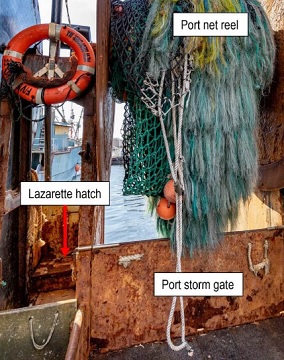
Loose Hatch Cover May Have Caused the Loss of the F/V Emmy Rose
The National Transportation Safety Board has concluded that the capsizing of the fishing vessel F/V Emmy Rose, which went down with all hands off Massachusetts in late 2020, was likely due to an unsecured hatch cover on its lazarette, which could have allowed rapid flooding when water accumulated on deck. In the early hours of November 23, 2020, The Emmy Rose was under way off Provincetown, Massachusetts with about 50,000 pounds of fish in her holds. She was headed to Gloucester, with winds of 20 knots and following seas of about six feet in height. >click to read< 21:18
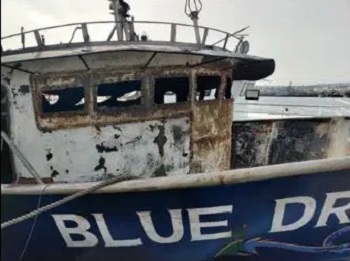
Cause Of Fire Aboard F/V Blue Dragon Determined By NTSB
No injuries or fatalities were reported in connection with the fire that resulted in more than $500,000 in damages to the vessel. The F/V Blue Dragon was under way conducting longline fishing operations in the North Pacific Ocean when the vessel caught fire. The six crewmembers and a National Marine Fisheries Service (NMFS) observer unsuccessfully attempted to fight the fire. They abandoned the vessel and were rescued by a Good Samaritan vessel. The F/V Blue Dragon was later towed to San Pedro, California. On Oct. 25, 2021, the F/V Blue Dragon left Honolulu, Hawaii, to fish for swordfish and tuna. On Nov. 9, while the crew were preparing to retrieve fishing gear, the NMFS observer discovered a fire in the wheelhouse under the console. >click to read< 08:57
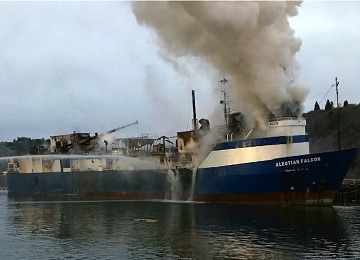
NTSB: Hot Work Failures Led to Fire on Aleutian Falcon
The fire was reported on the commercial fish processor Aleutian Falcon on Feb. 17, 2021 while the vessel was docked for repairs at a shipyard in Tacoma, Washington. The Tacoma Fire Department responded and extinguished the fire four days later. No one was on board the vessel at the time of the fire, and there were no injuries reported. An estimated 20-30 gallons of hydraulic oil leaked into the water but were captured by a containment boom. The vessel was declared a total loss with an estimated value of nearly $16.5 million. >click to read< 09:38
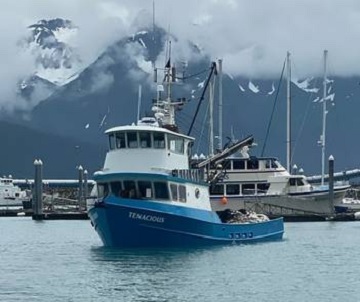
Fatigue Led to Sinking of Fishing Vessel in Alaska
On July 24, 2021, the fishing vessel F/V Tenacious, which fished primarily for pink salmon, grounded at the entrance to Wells Passage while transiting to fishing grounds in Prince William Sound. The five crewmembers abandoned the vessel and were rescued. The Tenacious later sank. The Tenacious crew arrived in Whittier late on July 22 to resolve maintenance issues with their skiff ahead of the opening of the fishery on July 24. Three of the crew made a 4-hour round trip to Seward, Alaska to borrow another skiff. According to a deckhand, the whole crew was running off “not too much sleep.” About two hours after getting under way for the July 24 fishery, the Tenacious struck rocks. >click to read< 10:27
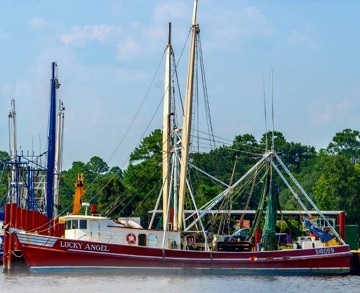
Fishing Vessel Fire and Sinking Caused by Deteriorated Wiring
The F/V Lucky Angel was trawling for shrimp in the Gulf of Mexico when a fire broke out in the vessel’s engine room on December 10, 2020. The three crewmembers attempted to fight the fire but were forced to abandon the vessel. They were rescued by the U.S. Coast Guard. The vessel sank two days later. No pollution was reported. There was one minor injury. The vessel was a total constructive loss with an estimated value of $120,000. A smoke alarm for the engine room indicated on the alarm panel in the wheelhouse of the Lucky Angel. When he reached the engine room, the Captain,,, >click to read< 13:07
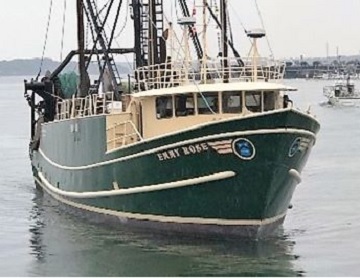
A year after sinking of Maine fishing boat, lawsuits near ruling, but questions remain
Next Tuesday makes exactly one year since a Portland-ported fishing boat, the F/V Emmy Rose, sank off the coast of Massachusetts, with all four crew later presumed dead. Also potentially within days, a federal judge is expected to rule in a case involving lawsuits by the crewmen’s families. The Emmy Rose, an 82-foot groundfish dragger, sank in the early morning of Nov. 23, 2020, about 25 miles northeast of Provincetown, Mass. There was no distress call from the vessel, only a signal at 1:30 a.m. from the boat’s emergency radio beacon, a device that automatically activates when a boat founders. >click to read< 08:31
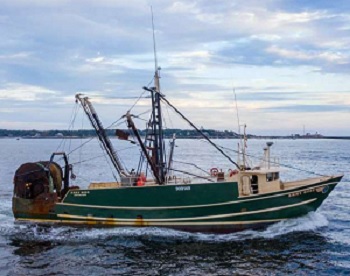
F/V Emmy Rose: NTSB uses video, high-res photos in probe of sunken fishing vessel
Investigators trying to learn why a commercial fishing boat sank off Massachusetts nearly a year ago, taking the lives of all four crew members, are using some high-tech gadgetry in their probe, federal authorities said Wednesday. The 82-foot Portland, Maine, based F/V Emmy Rose went down early Nov. 23 as it was heading to port after a seven-day fishing trip,,, Authorities have previously said it was heading to Gloucester, Massachusetts. The Emmy Rose was located in May, in an upright position with its outriggers deployed, in about 800 feet of water on the seafloor about 25 miles off Provincetown, >click to read< – NTSB releases new images of doomed F/V Emmy Rose – The National Transportation Safety Board has released some startling new images of a Portland, Maine based fishing vessel that sank on November 23, 2020 some 25 miles off the coast of Provincetown. >click here< 13:32

Coast Guard issues “party in interest” designation to owner/operator of container vessel
U.S. Coast Guard and National Transportation Safety Board marine casualty investigators boarded the container ship MSC DANIT, Saturday, in the Port of Long Beach. Prior to the visit, U.S. Coast Guard Lt. Cmdr. Braden Rostad, Chief of Investigations, Sector Los Angeles-Long Beach determined that the Mediterranean Shipping Company (MSC) DANIT was involved in a January 25, 2021, anchor-dragging incident during a heavy weather event that impacted the Ports of Los Angeles and Long Beach. The anchor-dragging incident occurred in close proximity to a subsea pipeline, which was subsequently discovered to be the source of the Orange County oil spill on October 2, 2021. >click to read< 12:09
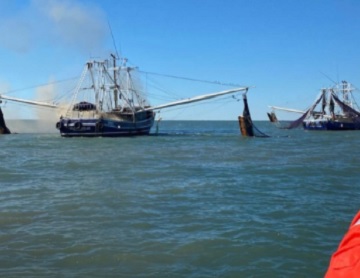
Fishing Vessel: Engine Room Only Shutoff Valve Let Fire Spread
Fuel shutoff valves outside the engine room might have stopped a fire that destroyed a shrimp boat after an explosion off Louisiana last year, federal investigators say. Other shrimpers saw the smoke and rescued all four people from the F/V Master Dylan. But the $300,000 boat was a total loss, the National Transportation Safety Board said in a report issued Tuesday. The report said one of the boat’s two generators exploded while the crew was shrimping off Port Fourchon about 7:45 a.m. on Dec. 1. The boat was registered in Louisiana but had left Port Arthur, Texas on Nov. 29. The captain emptied a fire extinguisher into the engine room without diminishing the blaze. >click to read< 15:14
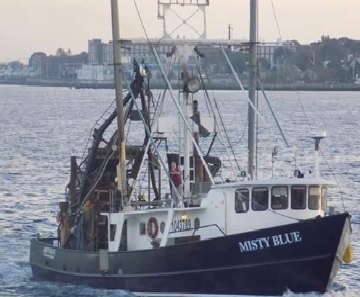
National Transportation Safety Board Report on U.S. Fishing Vessel Accidents
For the eighth year, the National Transportation Safety Board (NTSB) has released its “Safer Seas Digest 2020,”,,, While the report examines all maritime accidents, from inland towing to cargo ships, this article will focus on five notable fishing vessel incidents that occurred in 2019. A significant contributing causal factor to the fishing vessel accidents is crew fatigue. The NTSB noted in the digest that an effective way to prevent fatigue among crewmembers is for owners/operators to have measures in place to ensure that crewmembers receive enough rest to adequately perform navigational and lookout duties. >click to read< 08:52
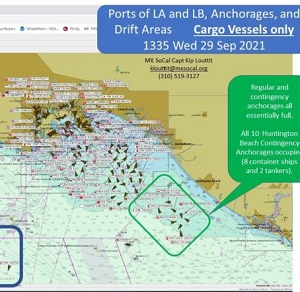
Everything We Know About the Southern California Oil Spill Right Now
Here’s what we know so far. The Coast Guard received an initial report of an oil sheen off the coast of Newport Beach Saturday at approximately 9:10 a.m. The size of the spill was initially reported to be 13 square miles.,, Here’s where it gets a little interesting… The location of the spill, 3 miles off Newport Beach and Huntington Beach, also happens to be just south of where there were more than 82 ships anchored and awaiting to enter the ports of Los Angeles and Long Beach as of Friday, according to the Marine Exchange of Southern California. >click to read< 08:36
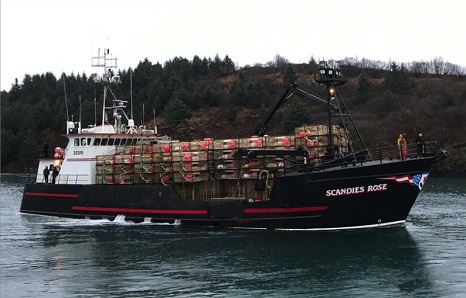
NTSB to Host Roundtable on Fishing Vessel Safety
National Transportation Safety Board Chair Jennifer Homendy is set to host a virtual roundtable next month on improving fishing vessel safety. The commercial fishing industry remains largely uninspected and is a marine sector of concern.,, The roundtable will feature government officials, industry leaders, fishing vessel operators, safety experts and survivors of fishing vessel accidents to discuss what can be done to address commercial fishing safety concerns, implement NTSB safety recommendations and improve the safety of fishing operations in the U.S. >click to read< – The roundtable is set to take place October 14, 2021. More details can be found here. 13:27

UPDATED: Harrowing details of fatal Seacor Power capsizing – ‘All hell broke loose’
The captain of a vessel that was near the Seacor Power when it capsized in the Gulf of Mexico in April, leaving 13 men dead, said Monday that he never heard an emergency radio call from the lift boat as it toppled in a ferocious storm. “I heard Mayday calls from some of the other boats, but I never heard any Mayday calls from the Seacor Power,” said Ted Duthu. In emotional testimony Monday afternoon, independent contractor Dwayne Lewis described a harrowing escape,,, Lewis, who can’t swim, said he bobbed for three hours in the Gulf before a shrimp boat rescued him. “You’re getting beat up, and you’re just begging God to please calm the seas,” he said. >click to read< 08:44
Listen to SEACOR POWER USCG Marine Board Public Hearing-The USCG and NTSB Joint Formal Hearing examining the cause of the capsize and loss of life onboard the SEACOR POWER that occurred on April 13, 2021.

F/V Scandies Rose: Inaccurate Stability Instructions, Ice Accumulation Led to Fatal Sinking
NTSB issues 7 Safety Recommendations from its investigation into the F/V Scandies Rose sinking. The 130-foot crab fishing vessel capsized and sank on December 31, 2019, The investigation found that although the crew loaded the Scandies Rose per the stability instructions on board, the instructions were inaccurate and, as a result, the vessel did not meet regulatory stability criteria and was more susceptible to capsizing. The NTSB made seven recommendations, including four to the Coast Guard, one to the North Pacific Fishing Vessel Owners’ Association, one to the National Oceanic and Atmospheric Administration and one to the National Weather Service. The agency also reiterated two safety recommendations previously issued to the U.S. Coast Guard. >click to read<,– to review all related articles, >click here<10:32

F/V Scandies Rose: NTSB announces probable cause of the sinking – Issues Report
The National Transportation Safety Board unanimously approved the investigative team’s findings on the sunken vessel’s probable cause. On Dec. 31, 2019, the F/V Scandies Rose was traveling southwest, west of Kodiak Island, but sank in frigid waters near Sutwik Island. Only two of the seven crew members survived the wreckage.,, Combined with heavy lopsided ice accumulation due to wind and sea conditions, which were more extreme than forecasted during the voyage, caused the vessel to sink near Sutwik Island. >click to read< NTSB Issues Report on the Sinking of the Scandies Rose – According to the NTSB, Scandies Rose likely accumulated 6-15 inches of ice on surfaces exposed to wind and icing during the voyage. The added weight from ice accumulating on one side of the vessel – plus the stacked crab pots on deck – raised the Scandies Rose’s center of gravity, reducing her stability and contributing to the capsizing. >click to read< 17:41
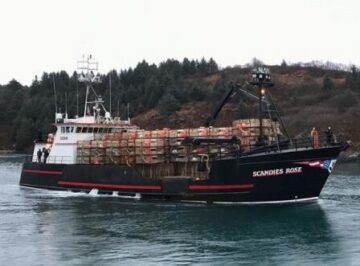
F/V Scandies Rose: NTSB board meeting set to determine probable cause of deadly sinking
The National Transportation Safety Board will hold a virtual public board meeting later this month to determine the probable cause for the 2019 New Year’s Eve sinking of the fishing vessel Scandies Rose. During the meeting, the NTSB’s five-member board will vote on the findings, probable cause and recommendations, as well as any changes to the draft final report. The NTSB board meeting will take place on Tuesday, June 29, starting at 9:30 a.m. ET, and will be streamed live to the public, with the board members and investigative staff meeting virtually. >click to read< 10:21
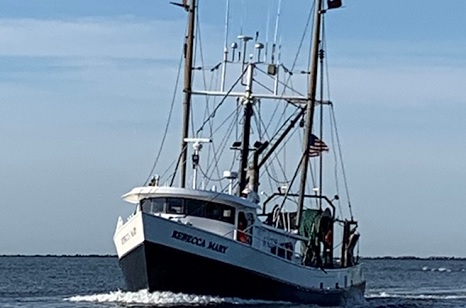
F/V Rebecca Mary Crew Credited for Early Communication, Fast Action During Sinking
The U.S. National Transportation Safety Board is crediting a heads-up crew and early communication with the Coast Guard for saving lives during last year’s sinking of the fishing vessel Rebecca Mary. The NTSB on Tuesday issued Marine Accident Brief 21/12 detailing its investigation into the accident, which occurred about 40 miles south of Martha’s Vineyard, Massachusetts., On June 17, 2020, in the early morning, the commercial fishing vessel Rebecca Mary began flooding in the aft portion of the vessel while under way in the Atlantic Ocean about 40 miles south of Martha’s Vineyard, Massachusetts. The vessel capsized and subsequently sank >click to read< 15:53
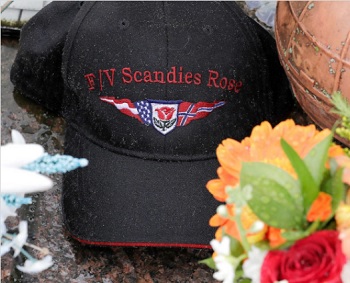
National Transportation Safety Board Opens Public Docket in F/V Scandies Rose Sinking
The docket for the investigation includes more than 4,500 pages of factual information, including interview transcripts, photographs and other investigative materials. It contains only factual information collected by NTSB investigators and there are no conclusions about how or why the Scandies Rose sank. The probable cause, analysis and recommendations will be released at a public board meeting on the Scandies Rose scheduled for June 29. The full final report will be released in the weeks after the board meeting. >click to read< 11:12
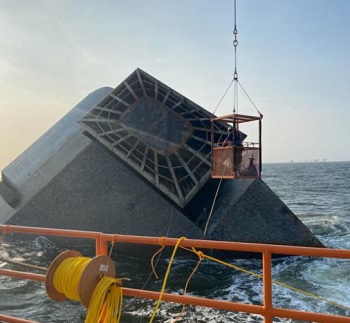
Seacor Power crew tried to drop vessel’s legs, anchor to seafloor when it capsized
A squall was passing over the Seacor Power in the Gulf of Mexico, the wind pounded and visibility from the wheelhouse of the massive lift boat had dimmed when a decision was made, three hours after leaving Port Fourchon on April 13, to drop its massive legs and anchor them to the seafloor. The emergency plan was to raise the deck above the rising sea and wait out a storm that was much more powerful than forecast, according to an early assessment of the tragedy released Tuesday by federal regulators. In a preliminary report,,, >click to read< 11:43


































